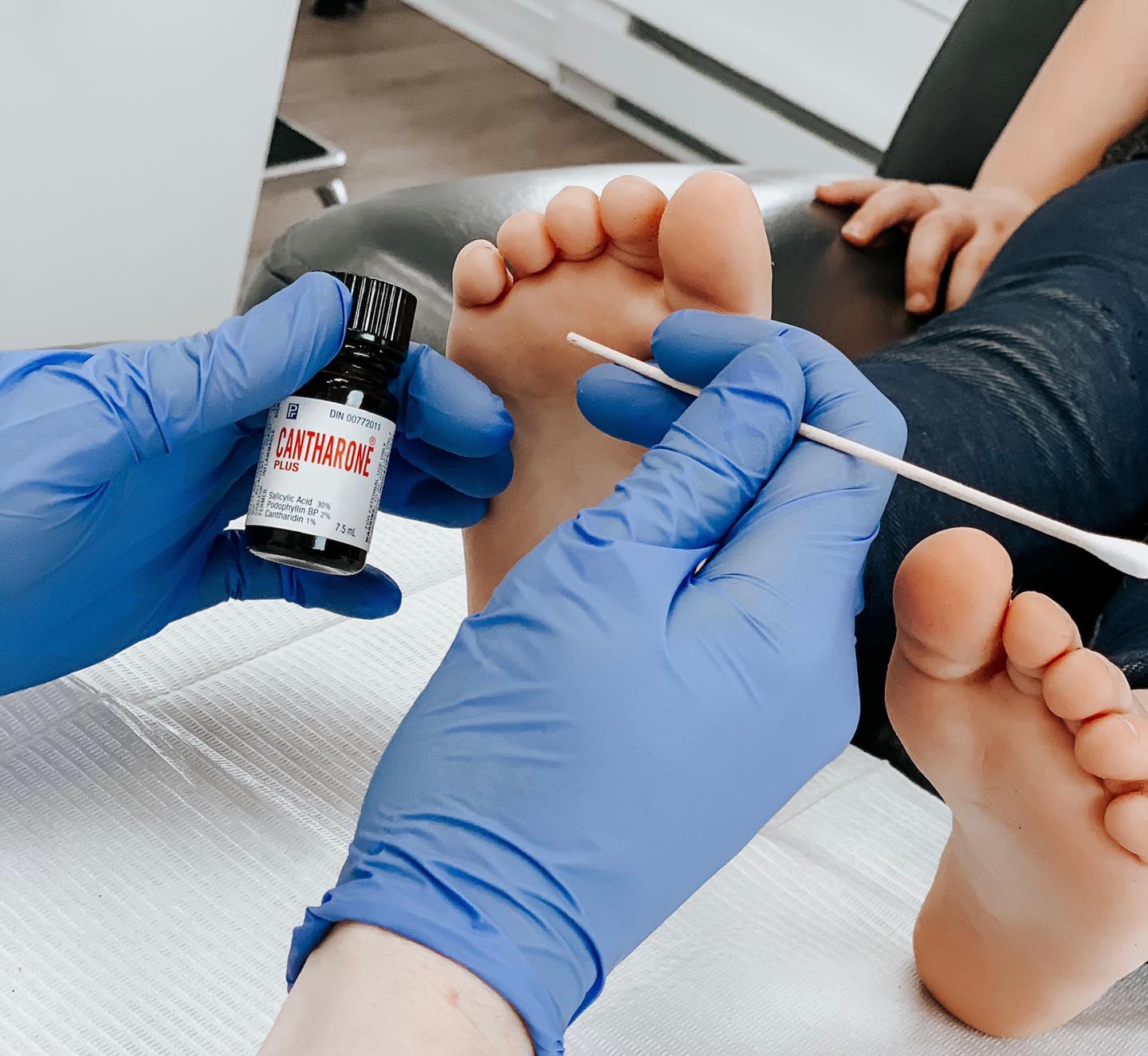A plantar wart initially appears as a small white bump, and as it grows, it can resemble a cauliflower with small black dots inside.
These black dots are the capillaries that nourish the wart and cause it to grow. Plantar warts are contagious, and the infection is spread through direct contact with the virus on the skin. Warts can develop at any age, but people who frequent public places such as pools, spas, and gyms are at a higher risk. It can take several weeks or even months for warts to appear after exposure to the virus; this is known as the incubation period.
The lifespan of a wart varies greatly and depends on several factors, including the infected person’s immune system. Some warts disappear on their own without any treatment, but in most cases, professional help is needed for healing. Warts generally do not cause pain unless they are located in an area of pressure. A podiatrist has several methods for treating warts, including applying antiviral medications or administering intralesional medication injection.
IN THE MEANTIME, BEFORE SEEING YOUR PODIATRIST…
What to avoid:
- Avoid walking barefoot in public places, especially on wet surfaces like gym floors, showers, and around pools.
- Do not touch, scratch, or file the wart, and avoid making it bleed.
- Avoid walking barefoot at home and clean the shower after each use.
Despite their unattractive appearance, warts are generally not serious. However, a plantar wart is contagious and can become painful if left untreated.
It is completely normal to have concerns about a painful or recurring plantar wart.
See a podiatrist quickly to receive treatment. This will avoid the risk of spreading it to your loved ones.

